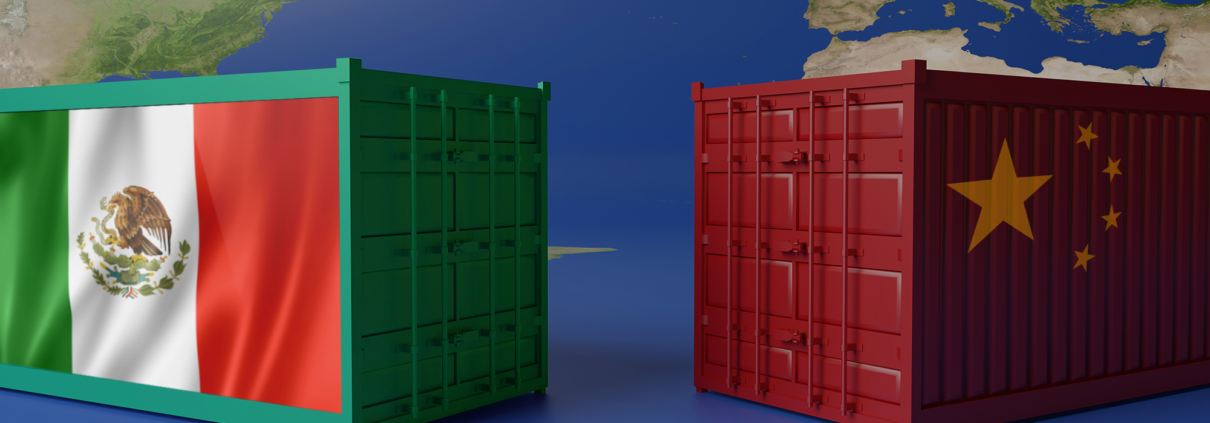*Original Post by Rintaro Tobita and Iori Kawate, NIKKEI Asia*
WASHINGTON/BEIJING — China was likely knocked off the perch as the top exporter to U.S. for the first time since 2006 last year, outpaced by Mexico as tensions between the world’s two largest economies reshape supply chains.
American goods imports from China dropped more than 20% on the year for the January-November period, according to U.S. Commerce Department data released this week. China accounted for 13.9% of total U.S. imports, the smallest share since 2004, after peaking at more than 21% around 2017. U.S. exports to China have stayed roughly flat on the year.
Mexico is set to take the lead for the full year for the first time since 2000. U.S. imports from the country are on track to set a record high in 2023, and its share of the total topped 15% for the first 11 months of the year.
Imports from the European Union also reached an all-time high for that period. While shipments from the Association of Southeast Asian Nations dipped on the year, the tally was still the second highest on record, and the bloc’s share of the total has doubled from a decade ago.
Japan’s slice of the U.S. import pie remains below 5%, even as the dollar’s appreciation boosted the value of its shipments in yen terms last year. Japan’s share has fallen more than half since 2000 amid a long slide as Japanese manufacturers stepped up U.S. production.
The U.S. is increasingly diversifying suppliers for products like consumer electronics for which it had relied heavily on China.
Smartphone imports from China fell around 10%, for example, while imports from India soared fivefold. Laptop computers saw a roughly 30% drop from China but quadrupled from Vietnam.
This trend has been encouraged by a push by U.S. President Joe Biden’s administration for “friendshoring” — keeping supply chains within allies and partner countries. The Biden White House has also maintained the tariffs on Chinese products worth $370 billion imposed by predecessor Donald Trump.
After China’s accession to the World Trade Organization in 2001, Washington initially opted to cooperate with Beijing on trade, in part to tap the massive Chinese consumer market. But the Trump administration, worried about China’s growing power and the impact of cheap Chinese products on American manufacturing, took a tougher stance, sparking rounds of tit-for-tat tariffs.
The Biden administration is considering further tariff hikes on electric vehicles, solar power equipment and less-advanced semiconductors, with a decision expected in the first half of this year.
The Federal Reserve has raised concerns about the impact of the decline in U.S.-China trade on inflation. Some analysts see the switch to domestic production of goods that were previously bought cheaply from China pushing up prices by tightening the labor market.
Chinese companies are responding by changing how they do business with the U.S., with some opting to invest more in Mexico. Hisense in 2022 started mass production at a $260 million factory making refrigerators and other appliances for the North American market. Automaker JAC Motors has set up an assembly plant in Mexico, and SAIC Motor plans to build a factory there as well.
Some of the “surging U.S. imports from a range of countries like Mexico and Vietnam are ‘transshipments'” rather than the new local manufacturing that Washington hopes to see with friendshoring, said Niels Graham at the Atlantic Council, an American think tank. “Chinese [foreign direct investment] into Mexico is growing, signifying Chinese manufacturers setting up shop there to help with final assembly.”
The Chinese government is rushing to reduce its reliance on the U.S. for exports.
It looks to boost the yuan’s role in international payments, using its own currency instead of the dollar in transactions with Russia, the Middle East and South America. Chinese exports to Russia jumped by more than half on the year in January-November 2023, setting a record even in full-year terms.
China’s auto exports grew about 60% on the year during that period, according to Chinese customs data. Most of these are gasoline-fueled vehicles facing weak domestic demand, which are being sold at low prices in the Middle East and Africa, a logistics industry source said.
*All information presented here, was first published on January 11, 2024 by Rintaro Tobita and Iori Kawate on NIKKEI Asia*
Original Source: https://asia.nikkei.com/Economy/Trade/China-set-to-lose-crown-as-top-U.S.-exporter-after-17-years



